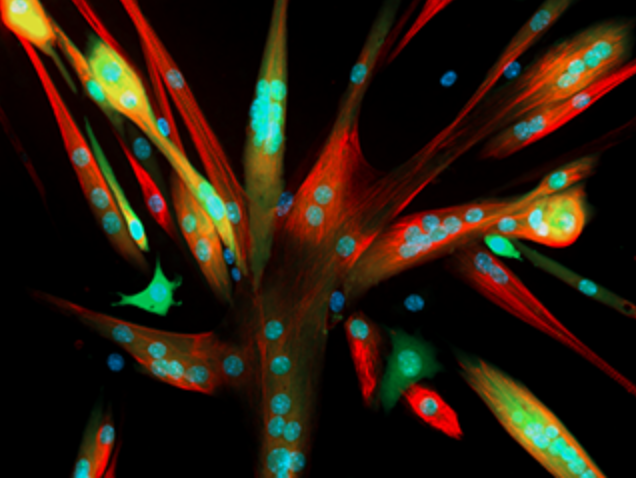Results of a largescale collaborative project led by scientists at the Cedars-Sinai Medical Center, Los Angeles, and the University of California, Irvine (UCI), were published in the journal Neuron this week “Large-scale differentiation of iPSC-derived motor neurons from ALS and control subjects.”
The study has generated induced pluripotent stem cells (iPSCs) from 341 ALS patients and 92 healthy subjects, differentiated these into motor neurons, and profiled the differentiated cells using immunocytochemistry and RNA-seq. Profiling has revealed that the sex of the patient and cell culture composition are among the strongest drivers of gene expression variation in the iPSC-derived motor neurons, regardless of whether they were from patients diagnosed with ALS. Multiomic and clinical data available for the motor neuron samples in the repository, can potentially lead to the development of new ALS therapeutics that target specific cells and pathways.
The samples are available to the research community through the Cedars-Sinai iPSC Core and Biomanufacturing Center, led by Dhruv Sareen, PhD, executive director of the Cedars-Sinai Biomanufacturing Center, associate professor of Biomedical Sciences, and co-corresponding author of the study.
“These big data sets and large numbers of ALS and control stem cell lines are now available to the ALS community to use and look for new causes and treatments for this devastating disease,” said Clive Svendsen, PhD, executive director of the Cedars-Sinai Board of Governors Regenerative Medicine Institute, professor of Biomedical Sciences and Medicine, and co-corresponding author of the study.
Induced pluripotent stem cells (iPSCs) are a key resource for uncovering molecular mechanisms responsible for neurological diseases such as amyotrophic lateral sclerosis (ALS) or Lou Gehrig’s disease, a disease that affects the central nervous system causing progressive loss of muscle control. However, until now there is a lack of curated motor neuron cell lines derived from ALS patients that researchers could use to model and study the disease.
ALS is a complex and incurable disease that remains poorly understood. Answer ALS, one of the largest resources for ALS biological samples globally, was established with the goal of generating 1,000 iPSC lines from patients with all forms of ALS, together with corresponding clinical data, whole-genome sequencing (WGS) data and multi-omics data on differentiated motor neurons.
“This is the first time that nearly 450 lines of stem cells have been simultaneously differentiated and turned into motor neurons from patients with ALS and healthy controls,” said Svendsen. “This was a collaborative effort with incredibly hard-working teams of scientists across many laboratories to provide a vital resource for the ALS community.”
RNA sequencing analysis on the differentiated motor neurons was conducted by Leslie Thompson, PhD, co-corresponding author of the study and Bren professor of Psychiatry and Human Behavior and Neurobiology and Behavior at UCI, and her team.
“We hypothesized that we would see differences in gene expression between ALS and healthy control groups, but the changes were subtle” said Michael Workman, PhD, a project scientist in the Svendsen Laboratory and co-first author of the study. “However, when we analyzed males and females separately, some specific changes in gene expression were seen—particularly in male ALS samples.”
Surprisingly, male ALS stem cells generated significantly more motor neurons than the control group, but this was not observed in female stem cells.
“It is known that women are less likely to get ALS than men, and if they do get diagnosed with it, it’s generally a little later in life and affects different sets of motor neurons,” said Svendsen. “Now that we have discovered gene expression patterns that can distinguish male and female motor neurons, it may help with designing therapies in the future.”
The data generated by the team is being collected and deposited into Answer ALS’ online open-source portal and can be downloaded by the research community.


